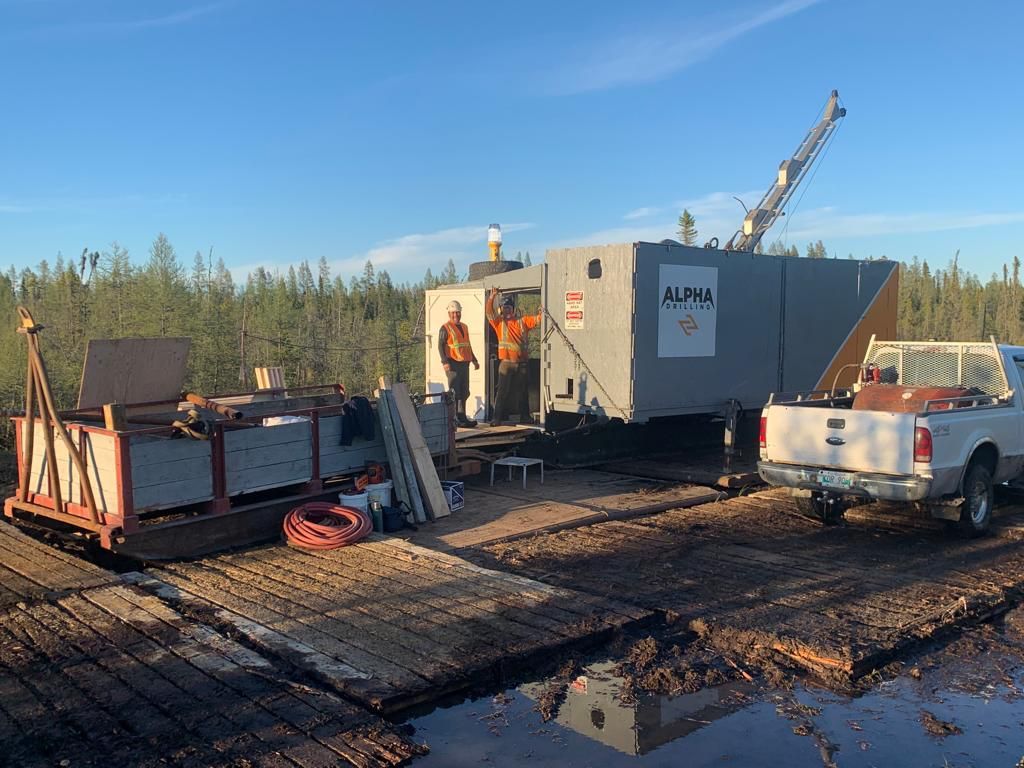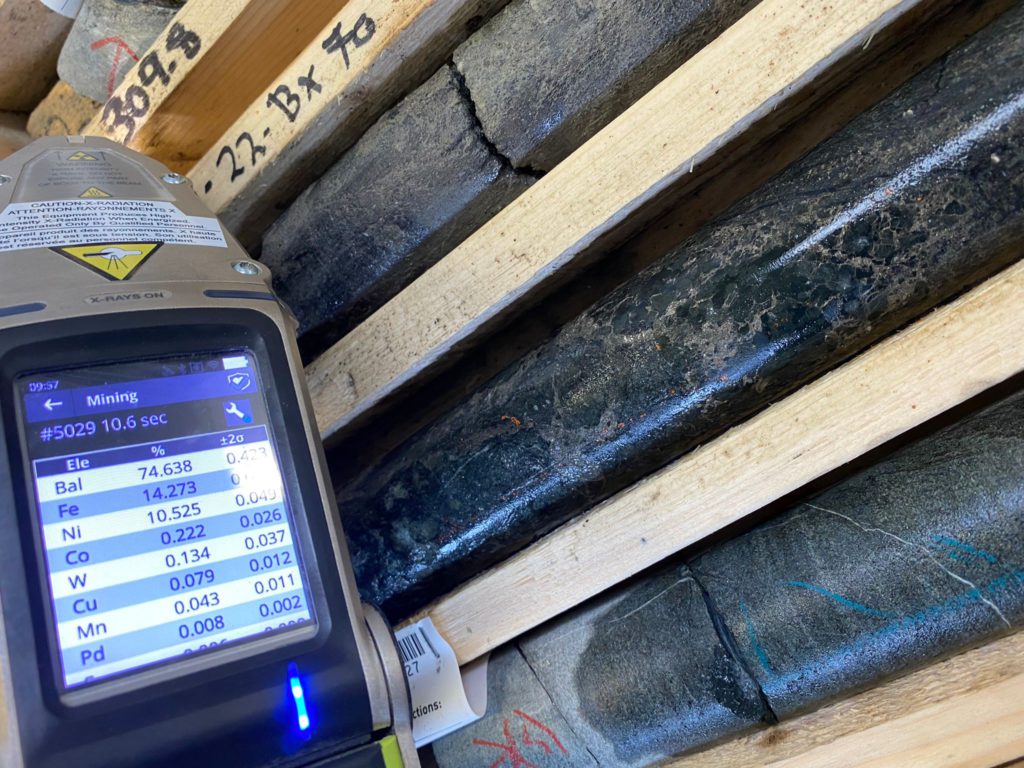JV Article: Metal Energy expands high-grade nickel zones at past-producing Manibridge mine


Metal Energy Corp. (TSXV: MERG; US-OTC: MEEEF) a Toronto-based battery metal exploration company, is actively expanding high-grade nickel sulphide mineralization at the past-producing Manibridge mine in the world-class Thompson Nickel Belt of northern Manitoba.
The company is expecting to complete a 10,000-metre diamond drill program in December at Manibridge, a former Falconbridge operation that produced 1.3 million tonnes at 2.55% nickel and 0.27% copper from 1971 to 1977.
Metal Energy completed its first drill program on the project last winter. Highlights include hole No. 4, which intercepted 0.92% nickel over 33 metres starting at a depth of 150.5 metres, including 1.24% nickel over 11.5 metres. Hole No. 3 cut 0.81% nickel over 13.5 metres starting at 337.5 metres; and hole No. 6 yielded 1.13% nickel over 9 metres starting at 700 metres, including 1.62% nickel over 5 metres.
Pleased with the winter results, the company completed 5,331 metres of drilling in 19 holes this summer from June to July. Sixteen holes reached bedrock, each intersecting nickel-copper-cobalt sulphide mineralization verified by X-ray fluorescence. Sulphide-rich zones range from 1 metre to 55 metres thick, the company says, with an average thickness exceeding 15 metres at depths between 150 metres and 300 metres. The zones may be amenable to open pit mining, said James Sykes, CEO of Metal Energy. All of these assay results are pending.
“Combined with the six drill holes from our winter program, we have a 100% nickel-sulphide intersection success rate in all of our completed drill holes at Manibridge,” he said. “We’ve drilled wide and tight-spaced holes across a kilometre strike length as deep as 700 metres. Mineralization is robust and open in all directions, especially at depth beyond the current scope of drilling, which has identified structurally-controlled high-grade mineralization potential.”

The company benefits from extensive exploration data at Manibridge, in addition to its mining history. The mine, 32 km southwest of the community of Wabowden, last operated in the 1990s in a lower nickel price environment, said Sykes, adding the company is one to two years from having calculated resources.
“The logistics are all here,” he said. “It has easy access. We didn’t have to prep the ground for anything. We can drive up right to where we want to go and that’s exactly where we are drilling. It’s been super simplistic that way.”
The company’s recent option agreement with Mistango River Resources (CSE: MIS) provides a unique opportunity to continue exploration with minimal dilution, greater insider ownership aligning with shareholders, and capital preservation, said Sykes.
Mistango can spend $1.5 million to earn 15% of the 43.7-sq.- km Manibridge project. Metal Energy holds a 70% interest, while CanAlaska Uranium (TSXV: CVV) holds the remaining share. The company can buy back the Mistango interest for $2.25 million with a 2024 deadline.
“We are excited to renew our Phase 2 drill program and complete the remaining 4,669 metres as we progress southwest along this fertile corridor,” said Sykes in a November news release.
Of the holes drilled to date, surface coordinates were within 300 metres to 600 metres of the Manibridge mine, said Sykes. The remaining holes are moving to within 150 metres to 300 metres of the workings to depths between 225 metres to 400 metres.
“Really, having the drill density from historic drill holes hasn’t provided us with too much information because they didn’t sample as much,” he said. “We sample more than they used to, and we’re showing there are more nickel sulphides in the ground than were originally recognized.”
Despite a lack of geochemical data in some cases, historic drilling is guiding exploration at Manibridge, said Sykes. Historic intercepts include 8.7 metres of 4.5% nickel at a depth of 203 metres, 24.08 metres of 2.93 % nickel at 186 metres, and 16.77 metres of 2.67% nickel at 245 metres. The company has also stepped out and drilled sulphide intercepts in areas with no previous drilling.
“This is following a particular trend that goes for at least three kilometres, and everywhere along this trend is continuously mineralized,” said Sykes. “To the northeast of the trend, near the end of the three kilometres, is another high-grade nickel discovery that occurs near surface.”
Previous operator drill results have returned intercepts upwards of 12% nickel, he added. “It’s a zone that remains quite open and we’re putting more effort into understanding the geology of this area.”
Geology at Manibridge is a metamorphosed ultramafic package, said Sykes. Sulphide deposits are stratiform or controlled by folds and shear systems.
“It’s predominantly nickel,” he said. “There’s a little bit of copper. It’s enriched in chromium of all things. So, that tells me it’s a very hot system with more primordial metal elements. It’s highly enriched in magnesium. As we drill, we drill through into this magnesium-rich ultramafic package that includes a considerable number of nickel-sulphide zones. A lot of these new discoveries are outside of what was previously defined.”
Sykes wants to find ore clusters and substantial grades over substantial widths.
“That’s always objective number one,” he said. “Any sniff of higher grades requires more attention because they may be offshoots of something much larger. Number two, we stick to the geology because we know it’s tried, tested, and proven.”

Exploration in northern Manitoba, a region replete with overburden, means relying on geophysics and diamond drilling, said Sykes, although geophysics doesn’t answer every question.
“We are progressing towards the old mine workings, and the idea behind that is hopefully the mineralization gets better as we go that way,” he said. “But as we head in that direction, we learn more about the structural controls of the system. We do think there is a depth component to this whole system – plunging downwards that nobody has ever explored.”
Using tighter drill-hole spacing means Metal Energy may be able to build tonnage while at the same time exploring for high-grade zones connected to the Manibridge mine, said Sykes.
Northern Manitoba is a mine-friendly jurisdiction with excellent infrastructure and an experienced workforce, said Sykes, adding the government of Manitoba supports exploration and development.
“They have accommodated some of our requests, and they’ve also been very strict and thorough too,” he said. “They have travelled out and completed site visits. It’s not like they’re just rubber-stamping things.”
The Thompson Nickel Belt hosts multiple nickel deposits with estimated production of 5 billion lb. of nickel since the early ‘60s, said Sykes.
Regional exploration began in 1946 with a 10-year geophysical and geological exploration program culminating in the discovery of the Thompson deposit in 1956 by Inco, according to the Manitoba Geological Survey.
A historical resource for Vale’s mining operations in the Thompson region is listed by the Manitoba Geological Survey as 150 million tonnes grading 2.32% nickel and 0.16% copper. Total reserves for the Thompson operation as of 2017 were 27.5 million tonnes at 1.75% nickel.
“The Thompson Nickel Belt is still vastly underexplored,” said Sykes. “In the right nickel price environment, the region has a heck of a lot of potential. The demand for nickel is at all time world highs. So, we need to incentivize lower-scale operations where grades of approximately 1% nickel or higher are lucrative and economic. That opens up the Thompson Nickel Belt dramatically.”
In November, Metal Energy began trading on the OTCQB Venture market with the symbol MEEEF in the United States, in addition to its TSX Venture Exchange listing.
“It was a big day for the company, expanding our investor outreach and developing a broader shareholder base within the United States,” said Sykes in a November news release.
Demand for Nickel and other battery metals should remain strong due to growing demand for electric vehicles and renewable energy storage technology, said Sykes.
“We continue advancing our flagship Manibridge project as we believe it has the size and scope to be recognized by the American investment community during this commodity supercycle,” he added.
The preceding Joint Venture Article is PROMOTED CONTENT sponsored by Metal Energy Corp. and produced in co-operation with The Northern Miner. Visit www.metalenergy.ca for more information.
Comments